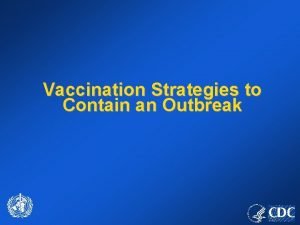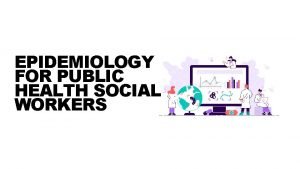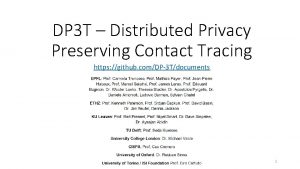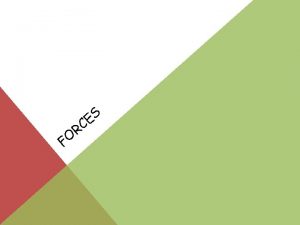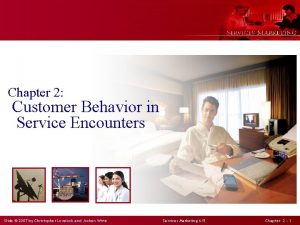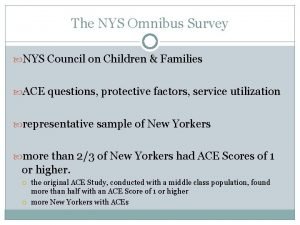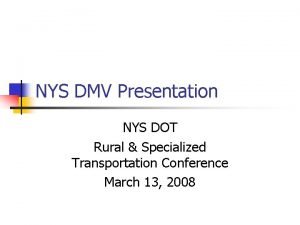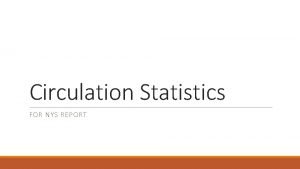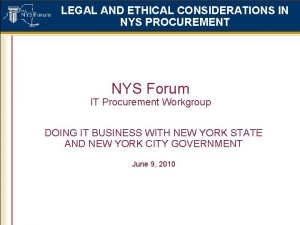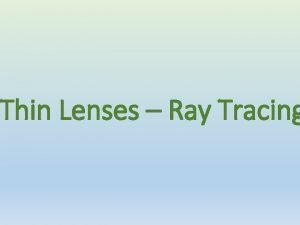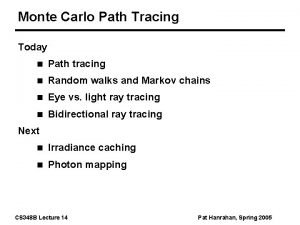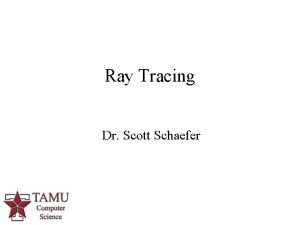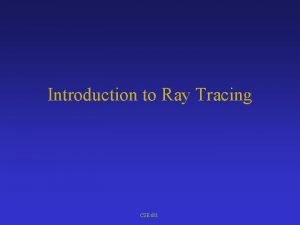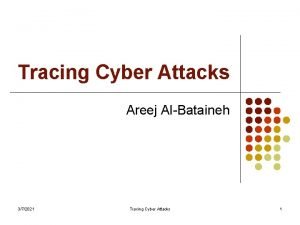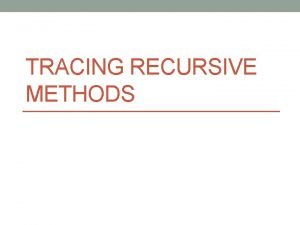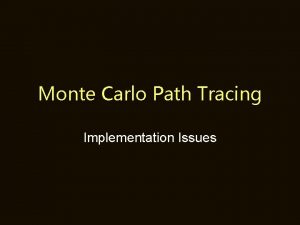NYS Contact Tracing Initiative 2 What Is Contact















- Slides: 15

NYS Contact Tracing Initiative

2 What Is Contact Tracing? • Contact tracing is a tool used by public health to slow the spread of COVID-19. • Contact tracing slows the spread of COVID-19 by: o Letting people know that they may have been exposed to COVID-19 and should monitor their health for symptoms of COVID-19. o Helping people who may have been exposed to COVID-19 get tested. o Asking people to self-isolate if they have COVID-19 or self-quarantine if they have been exposed to someone with COVID-19.

3 New York State is working with key partners on the NYS Contact Tracing Initiative. Local Health Departments (LHDs) PCG Virtual Staff • Conduct Case Investigations • Investigate Possible Exposures • Elicit Contacts of Case • Call Contacts Identified by LHDs • Provide Education • Discuss Need for Quarantine Order • Provide Education • Issue Isolation Orders • Address Needs of People in Isolation • Monitor Cases New York State Department of Health • Address Needs of People in Quarantine New York State COVID -19 Contact Tracing Initiative Provides Support, Guidance and Oversight through: • Contact Tracing Regional Support Teams • Regional Cluster Response Teams • Community Outreach Team • Laboratory Reporting Accountability Team • Monitoring and Evaluation Team • Refer for Testing If Appropriate • Monitor Contacts Other Key Partners • Bloomberg Philanthropies • Johns Hopkins University Bloomberg School of Public Health • Resolve to Save Lives, an Initiative of Vital Strategies • NYSTEC

4 Overview: How Does Contact Tracing Work? 1. When someone tests positive for COVID-19, the laboratory and healthcare provider notify the health department 2. The local health department calls the person who tested positive to see who else may have been exposed (also called close contacts) 3. Public health staff then call those people who may have been exposed. Those people are asked to stay home and self-quarantine for 14 days to stop the spread of COVID-19.

5 What Happens If Someone Is DIAGNOSED with COVID-19? • A public health worker will call to check on the person’s health. • They will ask the person who they have been in contact with and where they have spent time while they were sick and may have spread COVID-19 to others. • They will be told to stay at home and self-isolate, if they are not doing so already. • The person should continue to monitor their health. If their symptoms worsen or become severe, they should seek medical care. • A public health worker will help if the person needs support or assistance (for example, food or medicine) while in isolation.

6 What Happens If Someone Is WAITING for Their COVID-19 Test Result? • If a person thinks they may have COVID-19 and is waiting for a COVID-19 test result, they should stay home and monitor their health. • They should think about people they have recently been around. They can use the Contact Tracing Tool. • If they are positive, the local health department will ask them who they’ve been in contact with and where they spent time while sick. The person should answer the phone call from the health department.

7 What Happens If Someone Is EXPOSED to Someone with COVID-19? • A public health worker will call the person to inform them that they may have been exposed to COVID-19 (this is also called being a close contact). • The person should stay at home and self-quarantine for 14 days starting from the last day they were possibly exposed to COVID-19. • The public health worker will provide the person with information about COVID-19 testing. • A public health worker will help if the person needs support or assistance while in quarantine. • The person should take their temperature twice a day and watch for other symptoms, and notify their health department if they develop symptoms.

8 What Is a Close Contact? If a person has been around someone with COVID-19, they may be identified as a “close contact. ” A close contact is any person: • Who was within 6 feet (about 2 meters) of a COVID-19 case for 15 minutes or more • Who had physical contact with a COVID-19 case • Who had direct contact with infectious secretions of a COVID-19 case (for example by being coughed on) • Who was in a closed environment (classroom, meeting room, waiting room) for a prolonged period of time

9 What Are Isolation and Quarantine? ISOLATION if someone is sick or tested positive for COVID-19 • Separates a person with COVID-19 from people who do not have COVID-19 • The person must stay away from others for at least 10 days after their symptoms started or after their positive test (if they do not have any symptoms) QUARANTINE if someone has been exposed • Separates a person who is not sick, but may have been exposed to (in close contact with) someone who has COVID-19 • The person must stay away from others for 14 days to see if they get sick.

10 When to Seek Emergency Medical Attention • Look for emergency warning signs* for COVID-19. If someone is showing any of these signs, seek emergency medical care immediately: o Trouble breathing o Persistent pain or pressure in the chest o New confusion o Inability to wake or stay awake o Bluish lips or face *This list is not all possible symptoms. Please call your medical provider for any other symptoms that are severe or concerning to you. • Call 911 or call ahead to your local emergency facility: Notify the operator that you are seeking care for someone who has or may have COVID-19.

11 How Long Does It Take to Develop COVID-19? • It can take between 2 and 14 days from when a person is exposed to COVID-19 for that person to develop symptoms. The average is 4 to 6 days. • This is called the incubation period for COVID-19. • If a person is exposed to COVID-19, they should self-quarantine for 14 days and monitor for symptoms. Day 1: Exposed to COVID-19 ----------------Incubation Period------------------- Day 14: Develop Symptoms for COVID-19

12 How Long Is Someone with COVID-19 Infectious? • People with COVID-19 can spread the virus starting 2 days before they develop symptoms. Most people are no longer infectious once it has been 10 days after their symptoms began. • This is called the infectious period for COVID-19. • If a person tests positive for COVID-19, they should self-isolate for at least 10 days after their symptoms began or the date of their positive test. Can Be Infectious Starting 2 Days Before Symptoms Day 1: Symptoms Begin -----------------Infectious Period---------------------- Day 10: Most People Are No Longer Infectious

13 NY Communicable Disease Case Management System (NY-CDCMS) • NYS and Local Health Departments use a computer application called NY-CDCMS to track cases and contacts of COVID-19. • Information in NY-CDCMS is kept secure and private.

14 How Can People Help Prevent the Spread of COVID-19? Everyone Should: üWash your hands often with soap and water for at least 20 seconds, especially before you eat. üAvoid touching your eyes, nose, and mouth with unwashed hands. üAvoid close contact with people who are sick. üKeep a distance of at least 6 feet between yourself and people who don’t live in your household. üCover your mouth and nose with a mask when around others. üCover your cough and sneezes with a tissue and discard it in a closed container. üClean frequently touched surfaces and objects.

15 For More Information • Your local health department: https: //www. health. ny. gov/contact_information/ • New York State Department of Health o COVID-19 Hotline: 1 -888 -364 -3065 o Ask Us a Question: https: //coronavirus. health. ny. gov/form/ask-us-a-question o Website: https: //coronavirus. health. ny. gov/home
 Cdc contact tracing vaccinated
Cdc contact tracing vaccinated Cdc contact tracing
Cdc contact tracing Contact tracing doh
Contact tracing doh Dp3t contact tracing
Dp3t contact tracing Dermatitis atopica icd 10
Dermatitis atopica icd 10 Force and motion
Force and motion Friction unit
Friction unit Whats a noncontact force
Whats a noncontact force Air resistance contact force
Air resistance contact force Is air resistance a non contact force
Is air resistance a non contact force Dangling bond
Dangling bond Is tension a non contact force
Is tension a non contact force Need a service chapter 2
Need a service chapter 2 Which force
Which force Curve tracing failure analysis
Curve tracing failure analysis Tracing family descent through mothers rather than fathers
Tracing family descent through mothers rather than fathers
